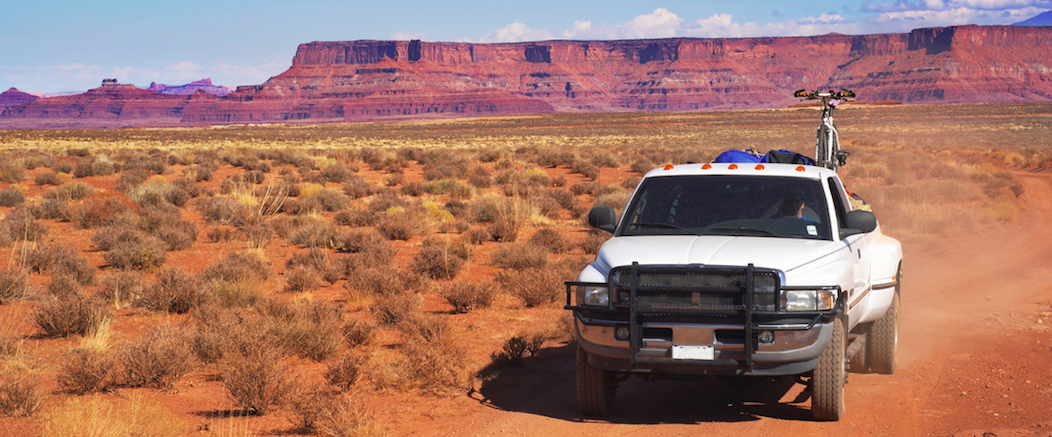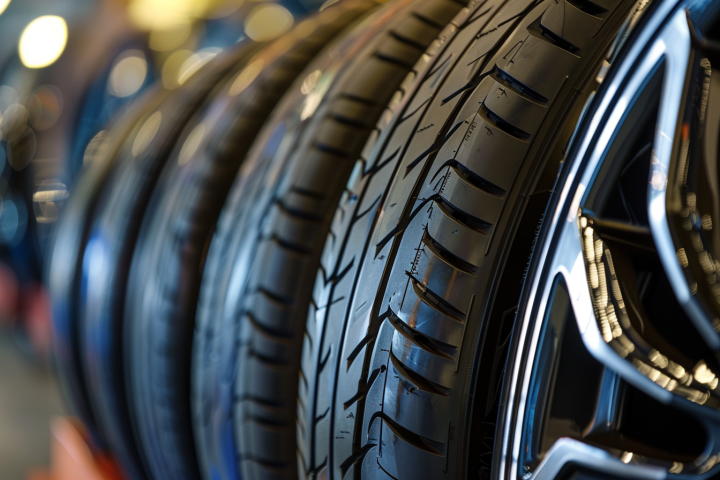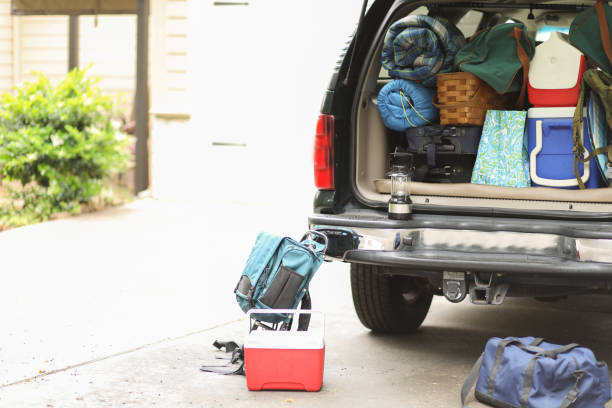Last Updated on October 9, 2024
Exploring the World of Garden Equipment Tires
Maintenance, Measurements, and More
Even if you love gardening and maintaining your yard, broken equipment and the wrong tool for your spring clean-up can turn an enjoyable pastime into a painstaking task. New garden equipment tires on your old equipment and a properly functioning utility trailer can save you time and money. Sometimes, a new tire, properly inflated, is all it takes to return your old wheelbarrow, tractor, mower, tiller, or hand cart to peak operating condition. There are four things to consider when picking replacement garden equipment tires.
- Type (Tube/tubeless, radial/bias)
- Tire Size
- Tire Tread Pattern
- Tire Load Capacity
This information lets you find and install the correct replacement garden equipment tires yourself. Here is some additional information about the tires on the equipment used by the typical homeowner or recreational gardener.
Wheelbarrow Tires and Hand-cart Tires
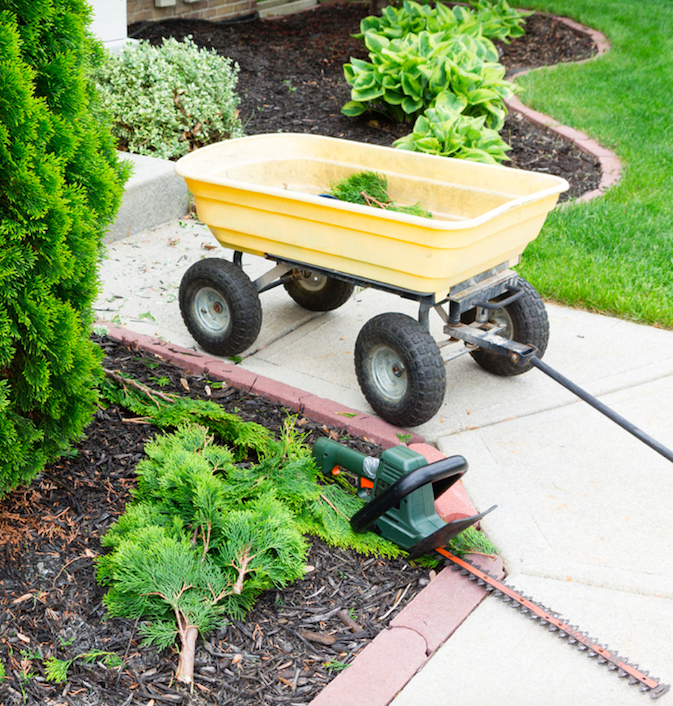 Any avid gardener with a good-sized yard likely has a wheelbarrow or a hand cart. The tires on more miniature wheelbarrows and carts are usually solid rubber. Little maintenance is needed for these types of tires, and they rarely wear out before the equipment breaks. Medium-sized and larger wheelbarrows and carts have pneumatic or air-filled tires. These tires do require maintenance and need to be replaced occasionally.
Any avid gardener with a good-sized yard likely has a wheelbarrow or a hand cart. The tires on more miniature wheelbarrows and carts are usually solid rubber. Little maintenance is needed for these types of tires, and they rarely wear out before the equipment breaks. Medium-sized and larger wheelbarrows and carts have pneumatic or air-filled tires. These tires do require maintenance and need to be replaced occasionally.
Pneumatic tires roll much more quickly than solid tires, make the equipment more stable and easier to handle, and cause less compaction and damage to turf. Since most wheelbarrows have only one tire, the tire and wheel assembly condition is critical to proper operation.
If you maintain your wheelbarrow, it can last for many decades, and the only thing you need to replace or repair occasionally is the tire. The same is true for hand-carts and other lawn and garden equipment tires that we will discuss later.
-
Repair vs Replacing Garden Equipment Tires
Most wheelbarrow and hand-cart tires are bias-ply tires with a tube inside to hold the air. If your tire has a slow leak and is frequently going flat, you may only need to repair or replace the tube. You should take the tire from the wheel and remove the tube. This is usually quickly done by wedging two or more flathead screwdrivers between the tire and the rim.
Once the tire has been removed, check for a puncture by holding the semi-inflated tire under water in a bucket. Consider repairing the tube with a bicycle tire patch kit if you find the leak. It is easy to do, and this repair is often all that is needed to make your wheelbarrow or hand cart operational again. Before you reinstall the tube in the tire, check the tire’s inner liner for thorns, nails, or other sharp objects still embedded in the rubber and causing the puncture.
Most people find it harder to put the tube and tire back on the rim than to remove the tire in the first place! If you have trouble mounting the repaired tube and tire, consider taking it to your nearest tire dealer or garden shop. Most will perform this service for free or for a nominal fee.
-
Sizing Wheelbarrow and Other Small Lawn and Garden Equipment Tires
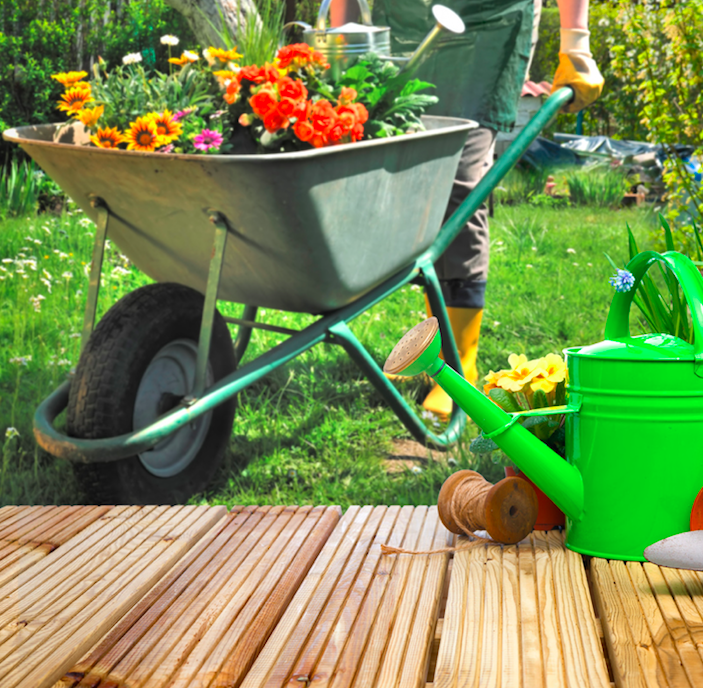 If the tire can not be repaired, or you need a different type of tread for your specific work, you will first need to find the tire type and size. A standard sizing system for wheelbarrow and hand-cart tires is two numbers separated by a hyphen.
If the tire can not be repaired, or you need a different type of tread for your specific work, you will first need to find the tire type and size. A standard sizing system for wheelbarrow and hand-cart tires is two numbers separated by a hyphen.
The size could also be a series of 3 numbers separated by an “X” or a “/.” The two most common sizes are 4.00 – 6 and 4.10 – 6. The first number is the height of the tire sidewall, and the second is the rim diameter. To get the overall diameter, you need to do some math! 6 (rim diameter) + 4.00 (sidewall height) X 2 = 14 inches total diameter.
An inexpensive, good-quality wheelbarrow or hand-cart tire in these sizes is the Nanco S-379 Wheelbarrow Rib tire, available on Tires-easy.com.
-
Tread Pattern
Once you have found and noted the numbers and any unique markings accompanying the size, the rest of the lawn & garden tire replacement buying process is easy. If the tire to be replaced gave your tread enough traction and was appropriate for your work in your garden and yard, a replacement tire with the same tread style is the best option.
Occasionally, you may find that another tread style could improve your efficiency. Quite commonly, gardeners who work in wet conditions or on sloped ground need a tire with more traction than the original tire’s ribbed tread pattern. A good wheelbarrow and hand-cart tire with a knobby tread for more traction is the WDT P605 Tire.
-
Load Rating
The last step in finding the right replacement tire is the load rating. If you regularly experience flat tires on your wheelbarrow or hand cart, you may want to change the tire for one with heavy-duty sidewalls. More sidewall plies mean the tire can support more load and is more robust to protect against puncture. The Greenball Sawtooth tire has a solid 4-ply sidewall and is reinforced for heavy residential use.
Ride-on Mower Tires and Tractor Tires
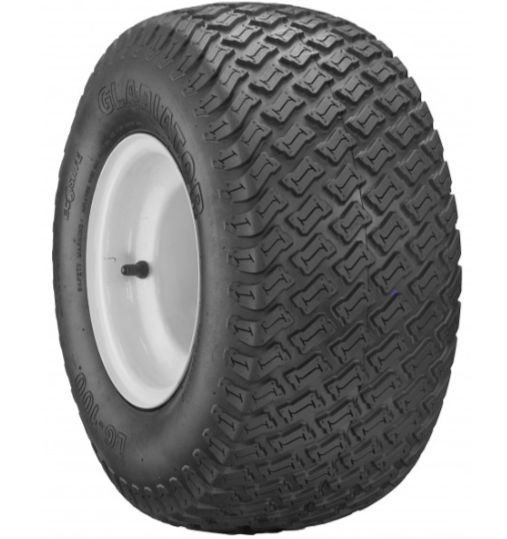
If you have acreage, live on a farm, or have a large lawn, you probably have a tractor or ride-on mower. Tires on this type of equipment wear out and must be replaced. You want to replace it with the exact size tire on the equipment. A popular tire size for the rear axle of ride-on mowers and garden tractors is 18 X 9.50-8. This means the tire’s overall diameter is 18 inches with a width of 9.50 inches, fitted on an 8-inch rim.
If you are replacing all the tires on your ride-on mower or tractor, you can pick a different tread pattern most appropriate for the surface you work on most often. For example, some homeowners use their tractors primarily for towing small utility trailers on paved driveways or hard-packed trails. In this case, a knobby tire wears out too quickly. A tire like the Gladiator Turf Tires is a better choice for use on pavement or hard-packed trails.
The tread has densely packed blocks, making it a versatile tire for use on trails and pavement. This type of tread on a zero-radius mower or garden tractor would also work well as it would not rip and tear the turf during sharp turns. For extra traction on wet turf or general tractor use in wet climates, the WDT P512 tire is a popular choice. It will give you more traction but wear out faster. There are plenty of other tread patterns on Tires-easy.com according to how much traction you need and how you use your tractor.
Tiller Tires
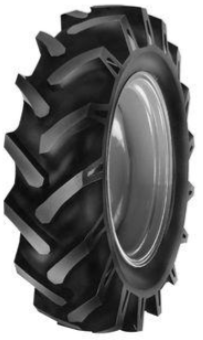
A tiller is another piece of equipment commonly found in the garden shed of homeowners with a green thumb. They are a practical tool. However, the nature of the work often leads to damaged tires. As the prongs pull the tiller through the soil, the tires are occasionally punctured or cut by severed roots or sharp rocks.
If this is the case in your garden, you should consider a heavier ply rating on your replacement tire. The most common size of tire on tillers is 13X5-6. A popular style in this size tire is the Power King D407 Lug tire. As you can see by the photo on the left, it has big traction bars like a farm tractor tire. Under the tread, it also has extra plies to protect the tire from damage.
Utility Trailer Tires
Utility trailers are another necessary piece of equipment for many homeowners and gardeners. They can be used to haul away clippings and yard waste and to transport soil or manure for your flower and vegetable gardens. They are often called into service to carry lawn and garden equipment to and from other locations or to haul small loads of lumber for fences or other home improvement jobs. You want to ensure your trailer tires are kept in safe operating condition, and you should check the air pressure before every usage, particularly if the utility trailer has been sitting unused for extended periods.

Most homeowners find that smaller utility trailers meet their needs. As such, the tires are considerably smaller than car tires. The tires on most small utility trailers are on 8-inch wheels to 12-inch wheels. As for lawn and garden equipment, the tire size can be found on the side of the tire.
Most utility trailer tires are approved for highway usage. However, you should ensure your tires have the D.O.T. stamp on them before using the trailer on public roads. A versatile and long-lasting tire for utility trailers is the Nanco N205 Bias ST Trailer Tire. It comes in the most common small trailer tire sizes and is D.O.T. approved, with a bias-ply internal construction for strength and value.
Conclusion
In the gardening world, where precision and care are paramount, understanding the intricacies of garden equipment tires is often overlooked but critically important. In this comprehensive guide, we’ve explored the essential aspects of garden equipment tires, shedding light on maintenance practices, tire measurements, and the vital signs that indicate replacement is due.
Gardeners now possess the knowledge they need to ensure their gardening tools and equipment are equipped with the right tires, enhancing efficiency and safety in their gardening endeavors.
Remember, well-maintained garden equipment tires make gardening tasks smoother and contribute to the longevity of your cherished gardening tools.
So, as you embark on your next gardening project, take a moment to inspect your garden equipment tires and apply the insights gained here to keep your garden blooming and thriving.
Where to Buy Garden Equipment Tires and Utility Trailer Tires
Tires-easy.com has a great selection of small utility trailer tires and all the other garden equipment tires typically found in an avid gardener’s garage or storage shed.
F.A.Q.s
How often do you need to replace a lawn mower tire?
Lawn mower tires should typically be replaced every 3 to 5 years, but the frequency may vary depending on usage and tire condition. Regular inspections for wear and damage are recommended.
What does the number on a garden tire mean?
The number on a garden tire, often called the tire size or code, provides information about its dimensions. It includes details about the tire’s width, aspect ratio, and rim diameter, helping you choose the correct replacement tire for your equipment.
How are mower tires measured?
Mower tires are measured using a standardized system that includes three numbers. The first number indicates the tire’s width, the second represents the aspect ratio or profile, and the third is the rim diameter. For example, in a code 18×9.50-8, 18 is the width, 9.50 is the aspect ratio, and 8 is the rim diameter.
When should I replace my lawn tractor tires?
Answer: Lawn tractor tires should be replaced when they show signs of significant wear, such as tread depth below recommended levels, visible cracks, or punctures that cannot be repaired. Regularly inspect your tires and replace them if safety or performance is compromised.
-
Proofreader






